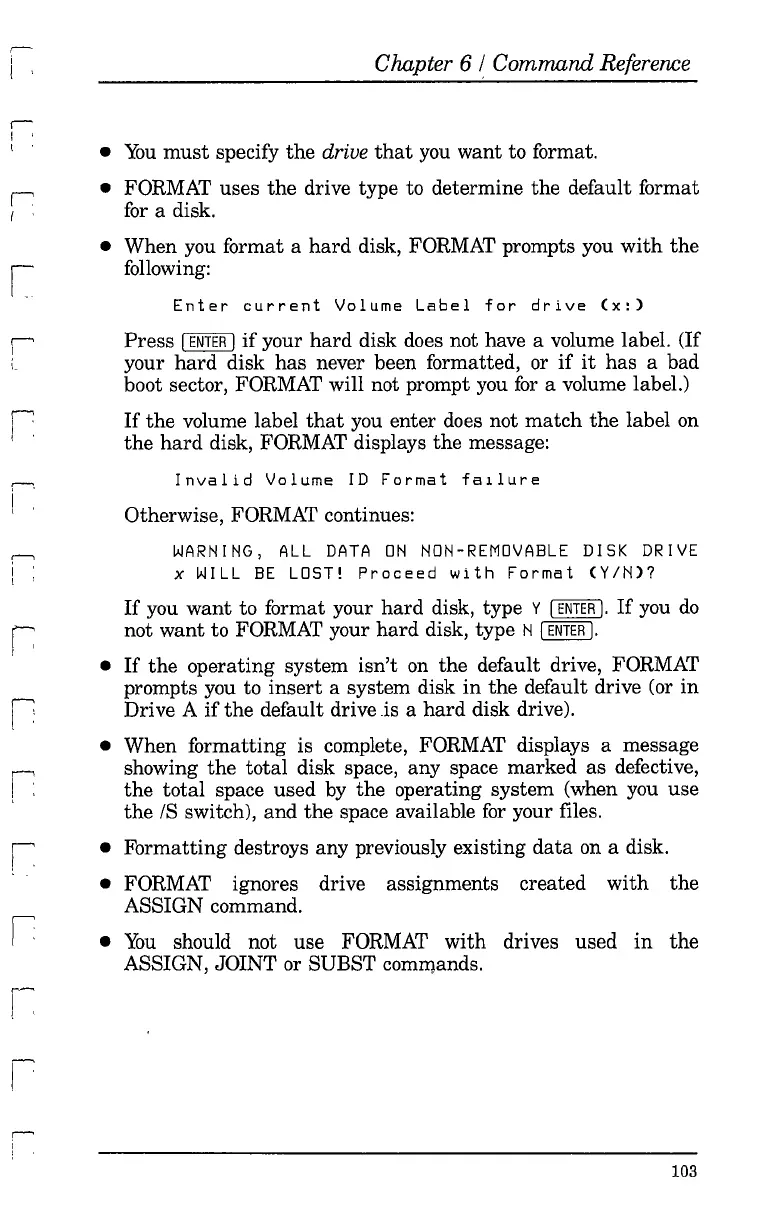r--
i
I '
r-
I '
t
r
(
I
t _
~
I
,-
r
I
"
I
t
r
r--"1
! :
,.,
I
:
Chapter 6 / Command Reference
•
You
must
specify
the
drive
that
you want to format.
• FORMAT uses
the
drive type to determine
the
default format
for
a disk.
• When you format a
hard
disk, FORMAT prompts you
with
the
following:
Enter
current
Volume
Label
for
drive
(x:)
Press
I
ENTER
I
if
your
hard
disk does not have a volume label. (If
your
hard
disk
has
never been formatted, or
if
it
has a bad
boot sector, FORMAT will not prompt
you
for
a volume label.)
If
the
volume label
that
you
enter does not
match
the
label on
the
hard
disk, FORMAT displays the message:
Invalid
Volume
ID
Format
fallure
Otherwise, FORMAT continues:
WARNING,
ALL
DATA
ON
NON-REMOVABLE
DISK
DRIVE
x
WILL
BE
LOST!
Proceed
with
Format
(YIN)?
If
you
want
to format your
hard
disk, type Y I
ENTER
I.
If
you
do
not
want
to FORMAT your
hard
disk, type N I
ENTER
I.
•
If
the
operating system
isn't
on
the default drive, FORMAT
prompts you to
insert
a system disk
in
the
default drive (or
in
Drive A
if
the
default drive
is
a
hard
disk drive).
• When formatting is complete, FORMAT displays a message
showing
the
total disk space, any space marked
as
defective,
the
total space used
by
the operating system (when you use
the
/S switch), and
the
space available
for
your files.
• Formatting destroys any previously existing
data
on a disk.
• FORMAT ignores drive assignments created
with
the
ASSIGN command.
•
You
should not use FORMAT
with
drives used
in
the
ASSIGN, JOINT or SUBST commands.
103
